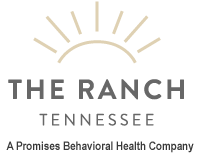Xanax is a potent benzodiazepine that works by slowing down activity in the brain and nervous system. When taken regularly or in high doses, Xanax can lead to physical and psychological dependence, meaning the body becomes reliant on the drug to function normally. Over time, the brain adapts to the presence of Xanax, and when the drug is suddenly reduced or stopped, the body reacts by producing withdrawal symptoms.
Withdrawal from Xanax can be dangerous because of the drug’s effect on the central nervous system. The brain and body become overstimulated once the calming effects of Xanax are removed, which can lead to severe physical and psychological symptoms. This is why it’s crucial for individuals looking to stop using Xanax to do so under medical supervision. Drug and alcohol detox in Nashville can help individuals in Tennessee safely manage withdrawal symptoms and get on the path to recovery.
Common Xanax Withdrawal Symptoms
Xanax withdrawal symptoms can range from mild to severe, depending on factors like how long the individual has been using the drug, the dosage, and their overall health. It’s also important to note that withdrawal symptoms can vary in duration, with some people experiencing them for days or weeks after stopping Xanax use.
Common Xanax withdrawal symptoms include:
- Anxiety and panic attacks – As the brain adjusts to the absence of Xanax, anxiety levels may spike, sometimes resulting in intense panic attacks.
- Insomnia – Sleep disturbances are a common withdrawal symptom, with individuals often experiencing difficulty falling or staying asleep.
- Irritability and mood swings – Many people going through withdrawal experience heightened irritability or sudden mood changes.
- Tremors and muscle pain – Physical symptoms such as shaking hands, muscle aches, or stiffness can occur as the body adjusts to life without Xanax.
- Sweating and heart palpitations – Increased heart rate, sweating, and palpitations are common as the nervous system becomes overstimulated during withdrawal.
- Seizures – In severe cases, particularly for those who have been using high doses of Xanax for a long time, seizures can occur. This is one of the most serious potential withdrawal symptoms and requires immediate medical attention.
These symptoms can make Xanax withdrawal difficult to manage without professional support. The severity of symptoms often leads individuals to return to Xanax use to alleviate the discomfort, perpetuating the cycle of dependence.
The Dangers of Abruptly Stopping Xanax Use
One of the most important things to know about Xanax withdrawal is that it should never be done abruptly. Quitting “cold turkey” can lead to severe withdrawal symptoms, including seizures, which can be life-threatening. Gradually tapering off Xanax under the guidance of a healthcare professional is the safest way to reduce dependence and minimize withdrawal symptoms.
How Professional Treatment Can Help
Managing Xanax withdrawal on your own can be overwhelming and dangerous, particularly for individuals who have been using the drug for an extended period. Professional treatment programs, such as those offered at The Ranch, provide the medical support and therapeutic care needed to safely detox from Xanax and address any underlying issues related to Xanax abuse.
Here’s how professional treatment can help:
- Medical detox – In a drug and alcohol detox program, individuals are monitored by medical professionals who can provide medications to ease withdrawal symptoms and prevent complications. Medical detox ensures that withdrawal is managed safely, reducing the risk of seizures or other severe symptoms.
- Therapeutic support – Xanax abuse often occurs alongside anxiety or other emotional challenges. Professional treatment includes therapy to address the root causes of Xanax use and develop healthier coping mechanisms. Cognitive Behavioral Therapy (CBT) and Dialectical Behavioral Therapy (DBT) are commonly used to help individuals manage anxiety without the use of substances.
- Tapering plans – As part of a professional detox program, a tapering plan will be developed to gradually reduce Xanax use. This controlled approach helps minimize withdrawal symptoms while allowing the brain and body time to adjust to the absence of the drug.
Successfully managing Xanax withdrawal is just the first step in recovery. Long-term support is crucial for maintaining sobriety and preventing relapse. After detox, individuals can benefit from ongoing treatment, including therapy, group counseling, and alumni programs that provide continued guidance and connection to a supportive community.
Call Today to Get Help at The Ranch
If you or a loved one is struggling with Xanax abuse, contact The Ranch today at 1.844.876.7680 or online. We’re here to help you safely overcome withdrawal and support you in building a healthier, more fulfilling life.

